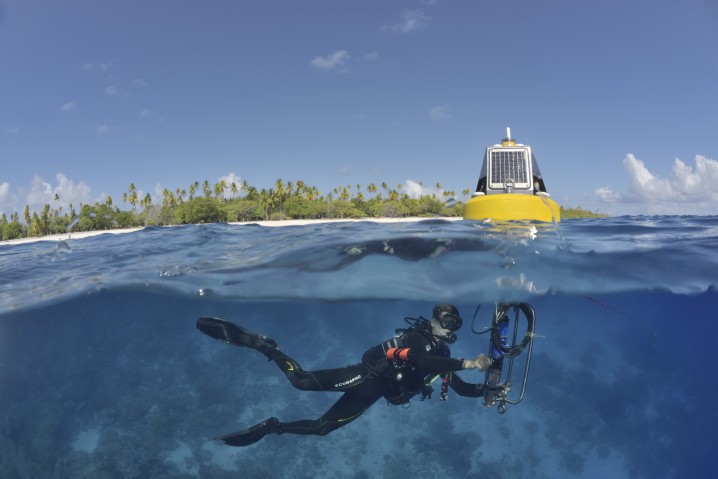MUST SEE: LA RUTA DEL CAFE in CHIAPAS MEXICO
MUST SEE: LA RUTA DEL CAFE 🇲🇽 CHIAPAS MEXICO

One cold January morning in the late 1800's, Arthur Erich Edelmann, his wife Doris, and seven other colleagues set sail from Hamburg, Germany, all from Perleberg, a small town an hour and a half from Berlin. Erich had a coffee machinery factory in his hometown, owned by his family, which was facing financial problems when they received and invitation from the Mexican government to bring their machinery and their expertise to the fertile region of Chiapas, Mexico. It would be amazing to know what they felt when they read that letter of invitation? That is a story that we do not know and perhaps we never will. What would you have thought to go from the deeply familiar to a place that seemed like a different world. Would you take a risk, abandon your business, your city, your people, your country, your language to start from scratch in a place so far away, so different in culture, language, nature and climate?

Erich traveled for three weeks across the Atlantic until he arrived at the Port of Veracruz, where he took a horse-driven cart with his people to go to Soconusco, Chiapas to the wild and untouched lands that he and his family would soon call home.
Before arriving in Mexico, we suppose that Erich had to have read all the information available about Chiapas, about Mexico and its culture, its people, language, nature, its history. However, there was nothing that could have prepared him for the intensity of his new life.
Erich, Doris and their people arrived in Huixtla, a small village with some houses built in adobe and palm trees, inhabited by friendly indigenous families who gave them the mules and human capital necessary to reach their final destination. From there, it took them another 8 hours to be able to transport along the newly created dirt roads, which looked like tunnels through the dense jungle. On their way they could observe the Tacaná, a volcano whose eruptions transformed the land around it into a fertile paradise.

With the help of workers from San Cristóbal, San Juan Chamula and Guatemala, Erich and his team of architects and engineers began to harmonize the land, build the first houses for the workers, the mill, roads. Erich and Doris lived for 11 years in one of these simple houses, couldn’t afford a bigger house, not yet. The priority was to prepare the land, build all the necessary infrastructure to work, keep people working, provide money and work, houses and food. The priority was its people and the priority was coffee.
They put a lot of work into investing in this long-term project so far from home, a lot of determination and hope, a great risk and a gamble. All that work, all those years, until finally: the first harvest and the start of Finca Hamburgo.

This exemplary coffee Resort Located in the Sierra Madre of Chiapas with More than 130 years of history and culminates as a cultural and extremely worthwhile experience
Argovia is a partner and initiator of the Coffee route in Chiapas, with cabins, outdoor pool, Spa, Yoga area, Restaurant, Bar, Event areas and tours.

Chiapas is the southernmost state in Mexico, and it borders the states of Oaxaca to the west, Veracruz to the northwest, and Tabasco to the north, and borders Guatemala to the east and southeast. Chiapas has a significant coastline on the Pacific Ocean.
The lowland, tall perennial rainforest has been almost completely cleared to allow agriculture and ranching. Rainfall decreases moving towards the Pacific Ocean, but it is still abundant enough to allow the farming of bananas, coffee and many other tropical crops near Tapachula. On the several parallel sierras or mountain ranges running along the center of Chiapas, the climate can be quite moderate and foggy, allowing the development of cloud forests like those of Reserva de la Biosfera El Triunfo, home to a handful of horned guans, resplendent quetzals, and azure-rumped tanagers.


How to get Argovia?
To get to the Finca you have to take 8th Street north (reference: intersection with 17th Street west) located on the border of the city, which will take you north, right at the end will become Road to New Germany. 40 minutes of road without changing your way to find the 39km, you´ll find a signal that says “Argovia 5 minutes” turn your way to the right. You will continue by Finca Eduviges paved road better known as New Germany and only 5 minutes more you’ll be in Argovia. We guarantee that any vehicle from compact to mini sedans can access our Finca with no trouble.

Miguel and Tony lead fabulous, custom tours from Marina Chiapas.

MUST SEE: Tairo Atoll – French Polynesia
MUST SEE: Tairo Atoll – French Polynesia –
Tairo Atoll – French Polynesia –
one of THE SEVEN TUAMOTUS IN THIS UNESCO Biosphere Reserve

The Tairo Atoll is part of the UNESCO Tuamotus Biosphere Reserve and was the last of the Tuamotus to be recorded and charted by European explorers. The Biosphere Reserve was established in 1977 and consists of 7 low islands of coral or atoll origin: Aratika, Fakarava, Kauehi, Niau, Raraka, Taiaro, and Toau. These atolls are very different from each other in size, shape, openness to the ocean, population and activities. Its character is unique: there are small closed lagoons such as those of Taiaro and Niau, the former being over-salted while the latter is brackish. And large lagoons open to the ocean such as Fakarava, which has the largest pass in French Polynesia 1,600 metres wide.
The Tairo Atoll is particularly fascinating as it is completely closed off to the ocean. While there may not be any permanent human residents there are many plants, mollusks, and fish. In 2022, a team of adventurous scientists from all over the world led by the Okinawa Institute of Science and Technology ventured to Taiaro to investigate this unique atoll. The interior lagoon is warmer and saltier than the surrounding ocean making it an interesting laboratory for interdisciplinary scientists studying a broad range of subjects form endemic species, to evolution, to adaptation, to climate change and more. For an accessible explanation of this mission, check out the description and video in this article:
https://www.oist.jp/news-center/news/2023/3/10/tiny-atoll-pacific-ocean-offers-glimpse-warmer-world

According to UNESCO, "Biosphere reserves are ‘learning places for sustainable development’. They are sites for testing interdisciplinary approaches to understanding and managing changes and interactions between social and ecological systems, including conflict prevention and management of biodiversity. They are places that provide local solutions to global challenges. Biosphere reserves include terrestrial, marine and coastal ecosystems. Each site promotes solutions reconciling the conservation of biodiversity with its sustainable use. Tairo is one atoll of 7 in the Biosphere Reserve of the Toamotus. It's inclusion is a testament to the unique and phenomenal ecology of the Atoll. Scientists have found a wide range of species inside an atoll that has only seasonal exchange with the outer ocean and hope that the microcosm of Taiaro may present some insight into adaptations to climate change yet to come.

Atolls are evidence of geologic change and great mystery. Once upon a time volcanic islands erupted out of the ocean. Slowly, coral began to encircle and surround the islands. In the Tuamotus the volcanos sunk, collapsed, and/or eroded away into the ocean leaving a ring of coral surrounding lagoons. The Taiaro atoll is a ring-shaped island built up on an ancient volcano that has sunk into the ocean due to the drift of the Pacific Ocean floor. Taiaro is only visible because of the rim of coral that forms a barrier reef 5 km in diameter around the original volcano. The inside of the atoll has a sandy bottom punctuated with coral heads or 'bommies' that host marine flora and fauna. The landmass of the atoll itself is home to endemic birds mollusks, coconut palms and other plants. The biodiversity is impressive.
Nearby, the Tahanea atoll offers a very different experience from Taiaro in that one can enter the atoll and experience the inside and the outside. Perhaps Tahanea offers a glimpse of what Taiaro may be like.




